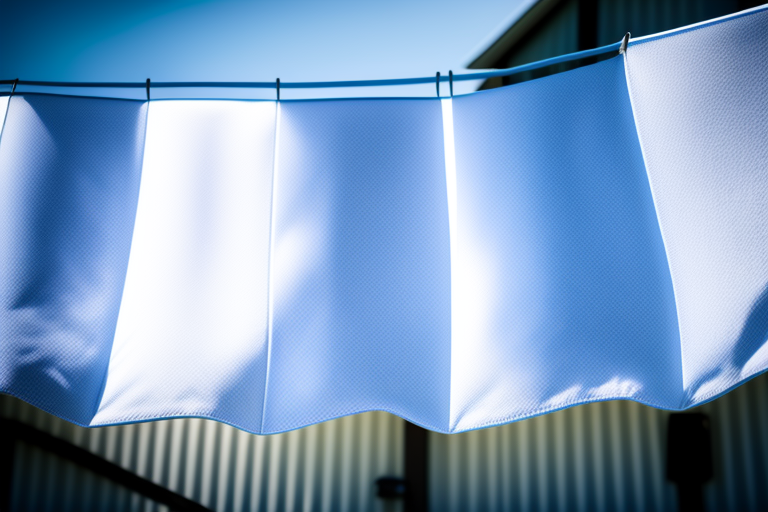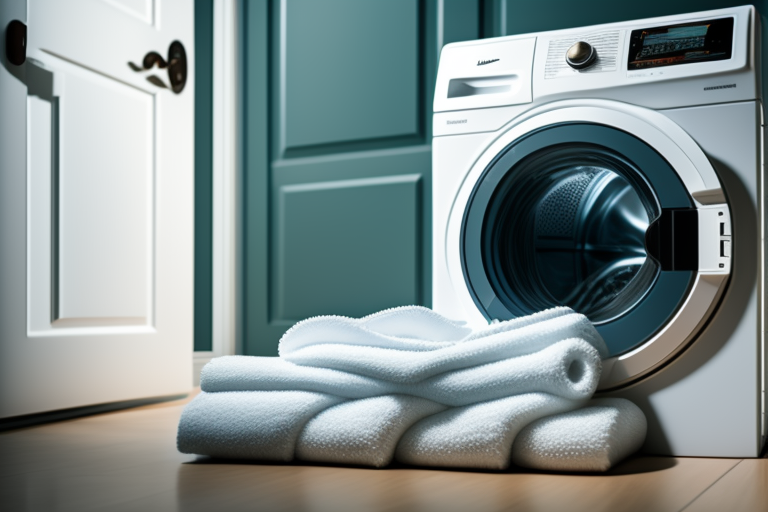Down comforters are the pinnacle of coziness. Nothing beats snuggling under a lofty, fluffy down comforter on a cold night. But to keep your down comforter in optimal condition, proper care is essential.
Caring for a down comforter is different than caring for regular bedding. The delicate down filling requires special handling to prevent damage. With the proper routine, you can keep your down comforter clean, dry, and puffy for years of blissful sleeping.
This beginner’s guide will teach you everything you need to know about washing, drying, storing, and maintaining a down comforter. Follow these tips and you’ll enjoy your investment in plush comfort for the long haul.
Why Down Comforters Need Special Care
Before we dive into the care instructions, let’s look at why down comforters aren’t like regular blankets and duvets.
What is a Down Comforter?
A down comforter is filled with the fine, fluffy down feathers from ducks or geese. This down filling is what gives the comforter its signature softness, warmth, and billowy loft.
The outer shell of the comforter is typically made from a lightweight, breathable fabric like cotton sateen or cotton cambric. Box stitching keeps the down evenly distributed throughout the comforter.
The Delicate Nature of Down
Down filling is extremely lightweight, soft, and compressible. But it’s also quite delicate:
- Moisture – Down absorbs moisture easily. Once wet, it takes a long time to dry and is prone to mildew.
- Heat – Excessive heat can scorch or melt the down.
- Agitation – Harsh washing and drying can damage the down and cause clumping.
That’s why down comforters require gentler cleaning methods than regular quilts and other bedding. With the proper routine, you can keep your down comforter’s loft and insulation power intact.
Preparing to Wash Your Down Comforter
Before tossing your down comforter into the washing machine, there are a few steps to take:
Read the Care Label
The first rule of washing your down comforter is to follow the care instructions on the label. Here are some things to look for:
- Machine washable – Most down comforters today are machine washable. The label will specify wash settings.
- Dry clean only – Some luxury down comforters must be professionally dry cleaned.
- Tumble dry – Unless specified, machine dry on low heat only.
- Dry flat – Lay flat to air dry instead of machine drying.
Check for Stains
Inspect the comforter for any visible stains and treat them accordingly before washing. For minor stains, spot clean the area with a small amount of mild detergent and cold water.
For tougher stains, apply a stain remover or laundry pre-wash spray. Let it sit for 5-10 minutes before washing. This will prevent stains from setting in the dryer.
Fluff the Comforter
Before washing, fluff up the comforter manually and gently shake it out. This will break up any existing clumps in the down filling.
Start at one end and slowly work your way to the other end, gently kneading and squeezing the comforter to lightly separate the down.
Washing Your Down Comforter
Here are the steps for safely machine washing a down comforter at home:
Use a Large Capacity Front-Load Washer
Wash your down comforter in a front-loading washing machine if possible. Top-loading agitator washers can damage the filling.
Make sure the drum is large enough to easily fit your comforter without cramming it in. This allows the down to move freely during the cycle.
If your machine is too small, head to a laundromat with larger industrial washers.
Wash on a Gentle Cycle
Choose the gentlest wash cycle to avoid excessive agitation. Many machines have a special cycle just for bulky items like comforters.
Set the water temperature according to the care instructions, usually warm or cold water. Avoid hot water as it can damage the down.
Use a Mild Detergent
Stick to a mild, hypoallergenic liquid detergent. Powder detergent can clump in the down.
Use only about 2-3 tablespoons of detergent. Too much can leave residue that coats the down.
Add an Extra Rinse
It’s crucial to rinse all traces of detergent from the down filling. Add an extra rinse cycle to the wash to fully flush out any lingering detergent.
Drying Your Down Comforter
Drying a down comforter requires careful heat and motion control. Here’s how to dry it properly:
Check for Detergent Residue
Before drying, check that all detergent is rinsed out. Squeeze sections of the comforter in cool water to flush out any bubbles. Remaining detergent can reduce the loft.
Use Low Heat
Just like washing, dry on low heat only to avoid damaging the down. High temperatures can scorch the feathers.
Set your dryer to the lowest heat setting or the air fluff setting if available. You want just enough warmth to slowly dry the comforter.
Add Tennis Balls
Adding a few clean tennis balls to the dryer helps break up clumps and fluff the down. They bounce around gently preventing the filling from matting.
As an alternative, you can use wool dryer balls. They provide a similar fluffing effect without adding unwanted chemicals.
Check and Fluff Periodically
Stop the dryer and check the comforter every 20 minutes. Manually fluff and redistribute the filling before continuing drying.
Repeat until the comforter is fully dry with lofty down throughout. This prevents over-drying.

Line Drying Down Comforters
While machine drying is preferred, you can also line dry your comforter. Here are some tips:
- Hang vertically on a clothesline using several clips to distribute the weight evenly.
- Choose a warm, breezy day for fastest drying. Avoid high humidity.
- Fluff and turn the comforter periodically as it dries.
- Bring inside at night to avoid rewetting from dew. May take 2-3 days to fully dry.
- Use a mesh bag for better air circulation if hanging indoors.
Line drying takes patience but is gentler than machine drying. Just ensure the down fully dries to prevent mildew.
Common Mistakes to Avoid
It’s easy to damage your down comforter if you aren’t careful in washing and drying it. Here are some mistakes to avoid:
High Heat
Never use hot water when washing or high heat when drying. This can scorch, melt, or mat down the delicate down feathers.
Overcrowding the Dryer
Do not stuff your comforter into a dryer that is too small. The down needs room to expand and air out. Get a larger dryer or take it to a laundromat.
Fabric Softeners
Avoid using fabric softener or dryer sheets when washing down. The waxy residue can coat the down and diminish insulation.
How to Spot Clean Your Down Comforter
For minor stains or soiled spots, you can spot clean your down comforter instead of fully washing it.
Here’s how:
- Blot away any excess liquid or dirt gently with a clean towel. Don’t rub aggressively.
- Mix a mild detergent with cool water in a spray bottle. Or use a down-safe cleaning solution.
- Lightly mist the stain, then dab gently with a clean cloth. Avoid soaking the area.
- Rinse by spraying clear water and dabbing dry.
- Lay flat and allow to fully air dry before using, fluffing periodically.
Repeat if needed for stubborn stains. Then fluff the down in that area.

Keeping Your Down Comforter Like New
Caring for your down comforter doesn’t end after washing. Use these tips to maintain its loft and increase longevity:
Frequently Fluff
Gently knead and “shake out” your comforter every few uses to prevent clumping. This restores loft to flattened areas.
Use a Cover
Protect your comforter with a duvet cover. You can take the cover off for washing instead of the whole comforter.
Wash Twice a Year
Fully wash your down comforter every 6 months. Cleaning seasonally keeps it fresh and prevents buildup.
Store Properly
When not in use, avoid compression. Store folded loosely in a breathable cotton bag.
The Final Word on Caring for Down Comforters
With the proper care, a quality down comforter will provide years of comfort and wonderful sleep. By following these washing, drying, cleaning, and storage tips, you can keep your investment as good as new.
While delicately constructed, down comforters are designed to handle routine machine washing if done gently. Taking the time to properly care for your comforter will extend its lifespan significantly.
So don’t be intimidated about cleaning your down comforter at home. Just be sure to use lower temperatures, larger machines, and take precautions to prevent damage to the down. With the right techniques, you can save money on dry cleaning while keeping your comforter fresh and lofty.
Now go indulge in the cozy embrace of your favorite down comforter! Just don’t forget these care instructions so you can enjoy it for years to come.
Frequently Asked Questions
How often should I wash my down comforter?
It’s recommended to fully wash your down comforter every 6 months or so. Washing seasonally – in spring and fall – helps keep it clean and prevent buildup of dust and body oils. But you can also spot clean in between washes as needed.
Can I wash my down comforter at home?
Yes, most down comforters today are machine washable if you use the right settings. Be sure to use a front-loading washing machine, gentle cycle, and mild detergent. Then dry on a low heat setting with tennis balls. Refer to the care label instructions.
What happens if my down comforter gets wet?
It’s important to fully dry a down comforter if it gets wet. Lay it flat and allow the down to fully air dry before using again. Fluff it periodically as it dries to restore loft. Prolonged moisture can lead to mold and mildew.
How do I add loft back to my flattened down comforter?
Regularly fluffing your down comforter prevents loss of loft. Gently knead and squeeze areas to redistribute and plump up the down. Airing it out on a clothesline also helps restore fluffiness between washes.
Can I use fabric softener on my down comforter?
Avoid using any fabric softeners or dryer sheets when washing down comforters. The chemicals leave a residue on the feathers that diminishes their insulating properties. Use only mild detergent and an extra rinse cycle.
What’s the best way to store a down comforter?
It’s important not to compress down comforters for extended storage. Keep folded loosely in a large breathable cotton bag or store inside a duvet cover. Avoid plastic containers or vacuum packing which flattens the loft.
How do I know when it’s time to replace my down comforter?
With proper care, a quality down comforter can last over 10 years. But if the down no longer fluffs up, or you see extensive clumping, shrinkage, tears, or stains, it may be time to replace it with a new comforter.








